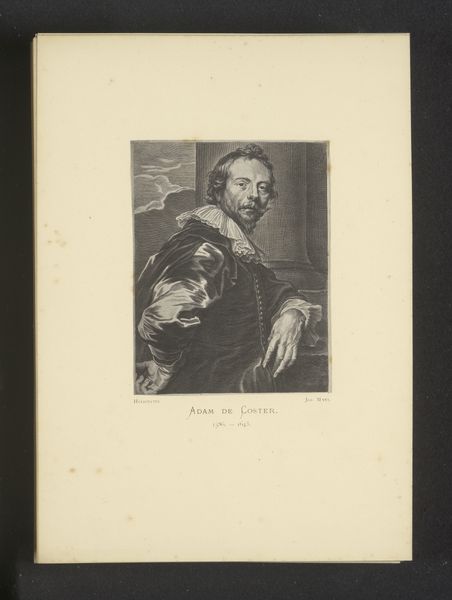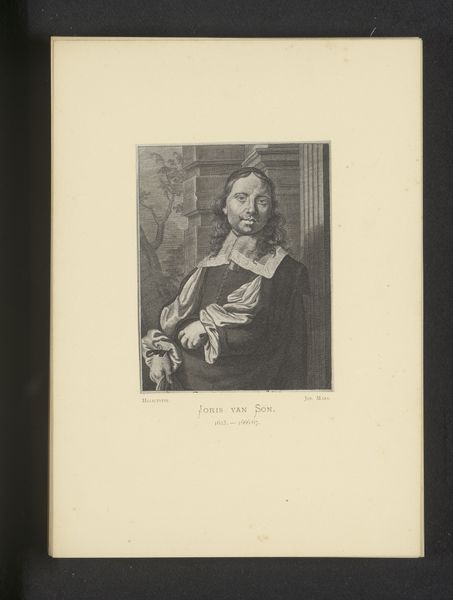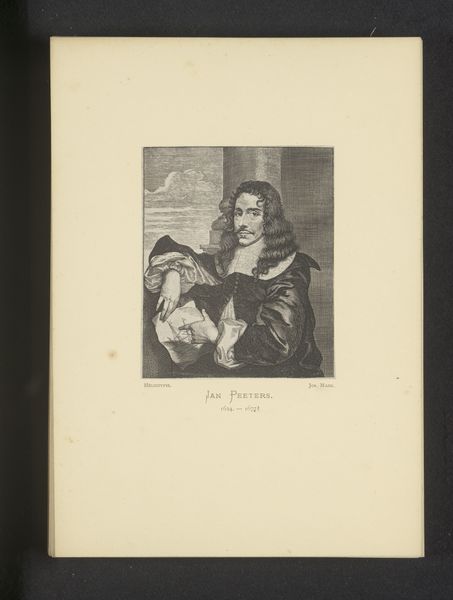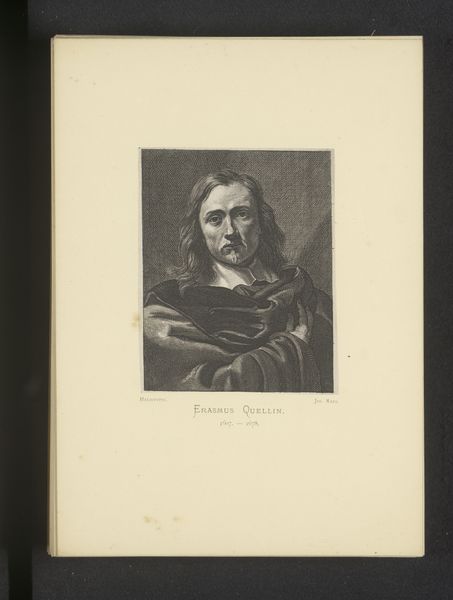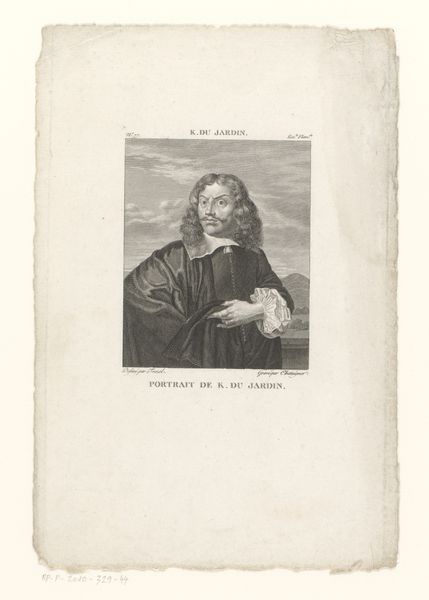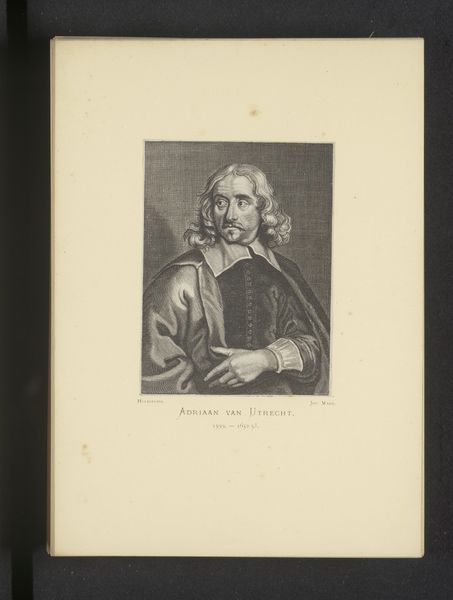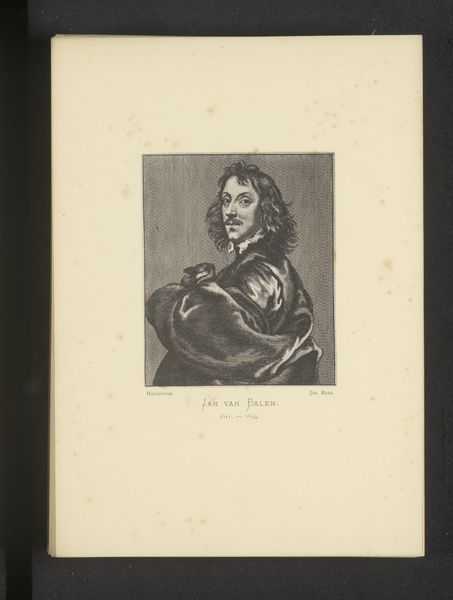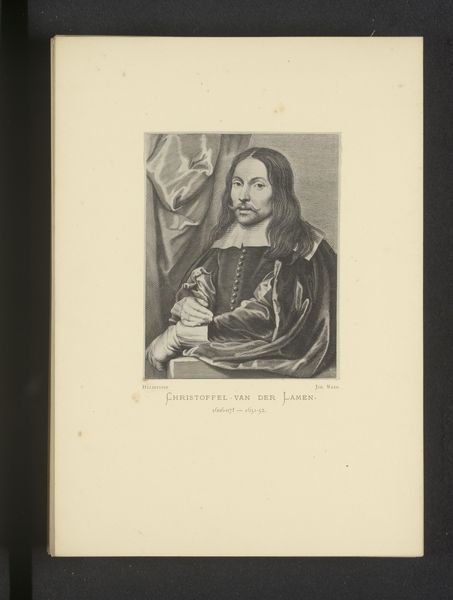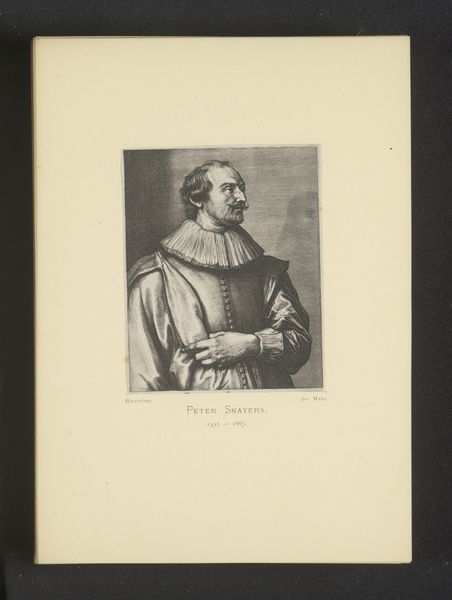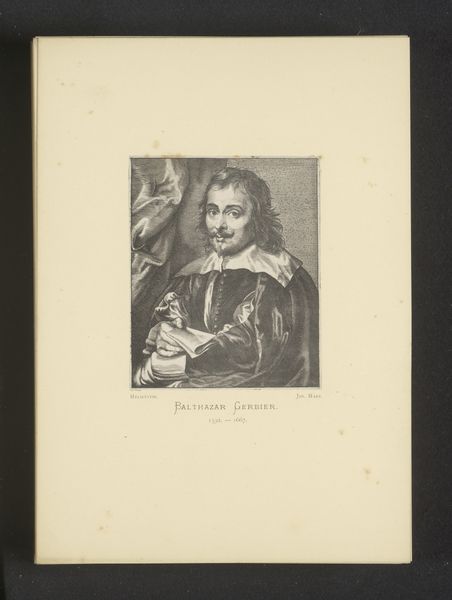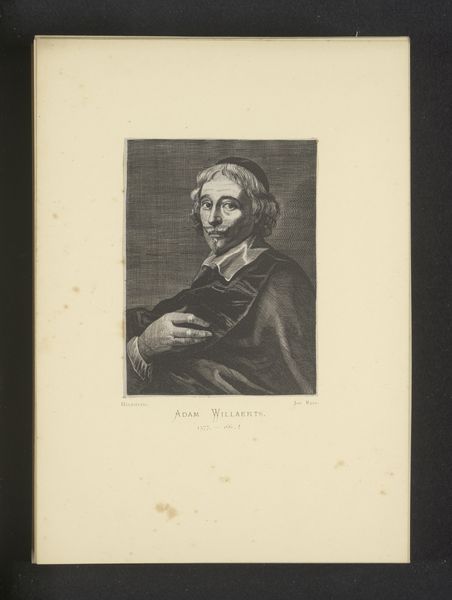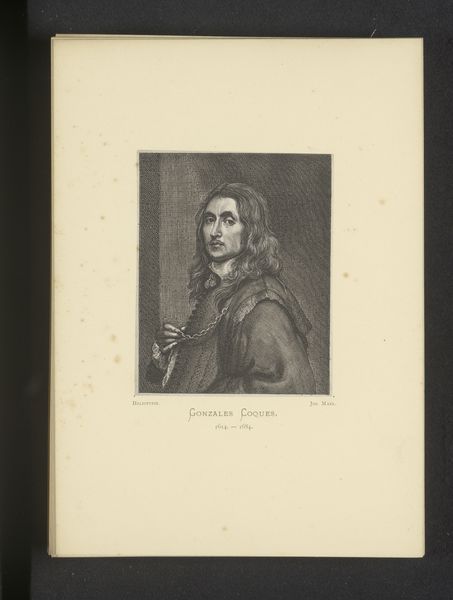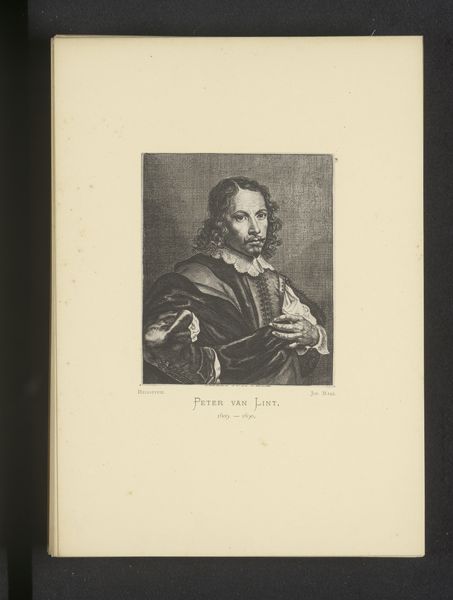
Reproductie van een gravure van een portret van Artus Quellinus door Richard Collin before 1877
0:00
0:00
Dimensions: height 121 mm, width 92 mm
Copyright: Rijks Museum: Open Domain
Curator: Let's turn our attention to this engraving; it's titled "Reproductie van een gravure van een portret van Artus Quellinus door Richard Collin," and it's dated to before 1877. It represents a notable baroque sculptor. Editor: Immediately, I’m struck by the detail achieved in this print. The subject's posture feels very contrived. But look at how light plays across his robe, almost pooling. The labor of capturing texture and light on this scale...it's captivating. Curator: Absolutely, and understanding Collin's choice to reproduce a portrait of Quellinus provides valuable insight into the artistic hierarchies of the 19th century. It signals Quellinus' enduring influence, and Collin's skillful engraving reaffirms the prestige associated with replicating the work of esteemed artists. The distribution of these reproductive prints helped disseminate a consistent canon, if you will, shaping public taste. Editor: That makes me think of how engravers during this period acted as almost an extension of the printing press, democratizing art, although maybe only for a select tier of society. Looking closely, I can see the distinct cross-hatching technique. It must have required tremendous skill and time to build those tones. It emphasizes craft and technique as forms of art historical agency. Curator: Precisely. Furthermore, engravings like this often served as a means of commemorating and promoting artists. These reproduced images were also circulated amongst a growing bourgeois class keen to furnish their homes and engage with elevated cultural expressions. This fostered and enhanced their cultural and social status, something of a soft power tool, shall we say. Editor: Right, and if we consider this engraving within a broader context of materials – ink, paper, the metal plate etched with painstaking care – we understand it not just as an aesthetic object, but also as a product of a specific labor dynamic, of access, and distribution of media. These prints gave form to ideas but they're also products themselves of industry. Curator: Indeed. The circulation of these portraits served to construct an image of artistic greatness, a concept very much manufactured and promoted by institutions and social forces. These prints solidified who mattered in art history, shaping and directing tastes. Editor: Yes, something easy to take for granted. It's tempting to romanticize craft, but we can see the means by which some hands, some labor, and not others came to be recognized through objects like this. The level of fine detail gives one a direct connection to the artist, no matter who he chooses to depict! Curator: A potent reminder to consider the context within which artistic reputations are established and maintained. Editor: A process that’s beautifully rendered but inherently layered, built quite literally by cross-hatching many agendas onto the surface.
Comments
No comments
Be the first to comment and join the conversation on the ultimate creative platform.
